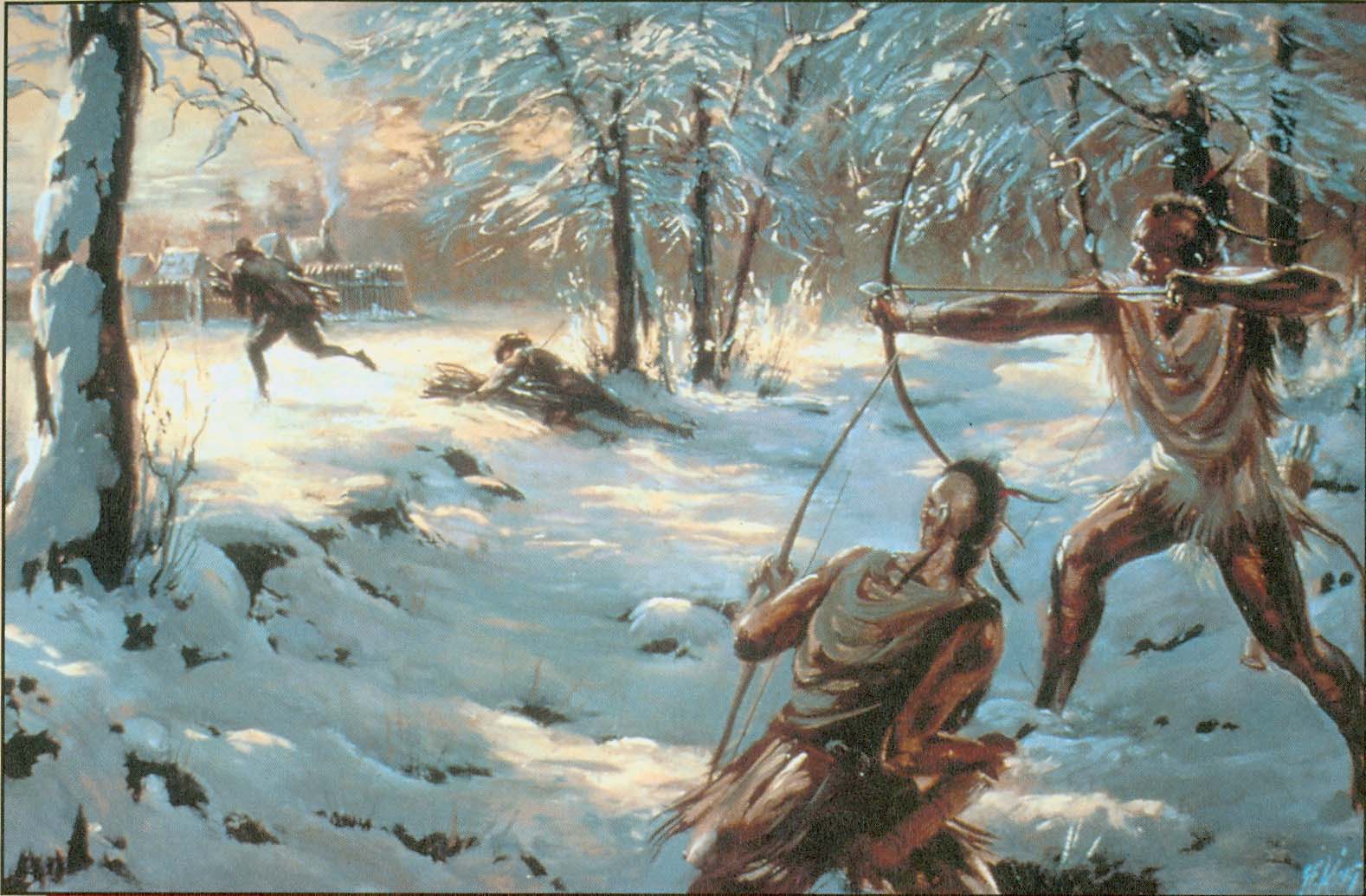
Fort Saybrook-The English planned the building of a
fort in the region during 1635 to offset the Dutch, who had also coveted the
area. The region in Connecticut had been inhabited by the Algonquin and
Nehantic Indians, but the Pequot Indians had eliminated them and were a
powerful tribe when the English moved into the area. The construction of Fort
Saybrook was authorized by John Winthrop Jr. (appointed first governor of the River
Connecticut by the Warwick Patentees). Winthrop selected Lieutenant Lion Gar-
diner of Massachusetts for the project, which also called for a town to be
built in the vicinity of the fort. Actual construction of Fort Say- brook, the
initial military fort to be constructed in Connecticut, began during March of
1636. By April, the settlement of Saybrook, named after Lord Saye and Sele and
Lord Brooke, was also underway.
The Pequot War War broke out in 1636, the first major
Indian-white conflict in New England. The death of a coastal trader, John
Oldham, in July of that year caused the outbreak of violence. Another coastal
trader, John Gallup, discovered Oldham’s hijacked boat off Block Island,
skirmished with the Pequot on board, then reported the incident to colonial
officials.
Massachusetts Bay Colony ordered out an expedition under
John Endecott. His force attacked Indians on Block Island and burned their
villages. But many of those killed were Narragansett, not Pequot. The soldiers
did not bother to distinguish among the various Algonquian peoples.
Endecott’s army then sailed to the Connecticut mainland in
search of Pequot. The settlers at Fort Saybrook tried to talk Endecott out of
further attacks because they feared Indian reprisals. But Endecott was intent
on revenge and burned several Pequot villages, killing one man.
Sassacus now sought revenge. During the winter of 1636-37,
his warriors laid siege to Fort Saybrook and raided isolated settlements. The
Pequots attacked Fort Saybrook in September 1636 and kept it in a state of
siege until April 1637, picking off anyone outside the fortifications. And they
killed, captured, and tortured men who ventured from the fort to harvest crops.
In April, the fort received reinforcements from Massachusetts, and the Pequots
shifted their attacks to more vulnerable areas. The Pequots continued to harass
the garrison, however, paddling past the fort and taunting the occupants by
displaying clothing taken from English victims.
Acknowledging his weakness, Sassacus initially sought to
ally himself with the powerful Narragansetts and make a concerted effort
against the Europeans. However, his diplomacy was thwarted by Roger Williams of
Rhode Island, long viewed by that tribe as a benefactor, and they remained
neutral. Sassacus remained unperturbed by this setback, and in the spring of
1637 his warriors ravaged the settlement of Wethersfield, on the Connecticut
River, killing nine colonials. The colonies mounted a large army under Captains
John Mason and John Underhill. The force sailed west- ward along the Connecticut
coast, then circled back, overland, from Narragansett Bay. Despite the attack
on their people on Block Island, Narragansett joined the colonial force against
their enemies the Pequot, as did Mohegan and Niantic.
At dawn on May 25, 1637, the invading army attacked
Sassacus’s village. Fighting from behind their palisades, the Pequot repelled
the first attack. But the colonists managed to set the wigwams on fire. Those
who fled the flames were cut down in the surrounding countryside. Those who
stayed behind, mostly women and children, burned to death. From 600 to 1,000
Pequot died that morning. Sassacus and others escaped. His group was attacked
in a swamp west of New Haven the following July, but he managed to escape
again, seeking refuge in MOHAWK territory. To prove that they had no part in
the Pequot uprising, the Mohawk beheaded the Pequot grand sachem.
Pequot captives were sold into slavery in the Caribbean or given as slaves to the Mohegan, Narragansett, and Niantic as payment for their help in the war. The colonists no longer permitted the use of the Pequot tribal name or the use of Pequot place-names. Some Pequot escaped to Long Island and Massachusetts, where they settled with other Algonquians. In 1655, the colonists freed Pequot slaves in New England and resettled them on the Mystic River.